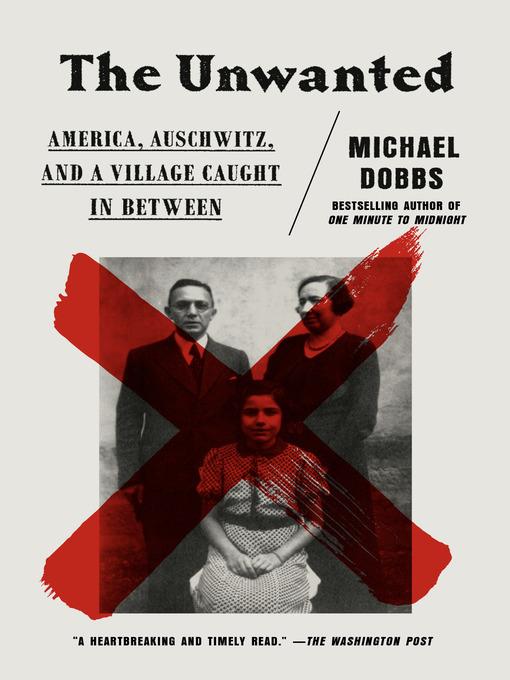
The Unwanted
America, Auschwitz, and a Village Caught In Between
کتاب های مرتبط
- اطلاعات
- نقد و بررسی
- دیدگاه کاربران
نقد و بررسی

February 15, 2019
Dobbs (Six Months in 1945: FDR, Stalin, Churchill, and Truman--from World War to Cold War, 2012, etc.) follows the trail and the trials of the Jewish population of Kippenheim, a small village near the Black Forest.For decades in this rural area, there was little friction with the locals, and anti-Semitism seemed to be confined to cities and towns. As the author writes, "for many Christian Kippenheimers, antisemitism was more a matter of class resentment than racial hatred....A cultural and psychological gulf developed between the Christian farmers and the Jewish tradesmen." Despite the gulf, there wasn't much violence. However, everything changed with Kristallnacht, a supposed "spontaneous protest" against "murderous" Jews. The senseless roundup and destruction of Jewish men was the signal, to those who were paying attention, that Germany was not safe. In this potent, focused history, Dobbs tells the alternately heart-wrenching and uplifting story of the Kippenheim Jews who entered the tangle of bureaucracy involved in the efforts to obtain visas and flee Germany. Most wished to go to the United States, but there were immigration quotas, and those quotas were filled in 1938, with little hope of expansion. Thankfully, there were those who eventually made it to America, but they were often greeted with xenophobia. In his thorough research, the author discovered many instances of those who bent the rules to help--e.g., tireless organizations like the American Jewish Joint Distribution Committee and the Rescue Board as well as many brave individuals--and he generously shares those stories with readers in the hopes that we will never forget what happened to the thousands of "unwanted" refugees who fled the Nazi killing machine. In her foreword, Sara Bloomfield, the director of the U.S. Holocaust Memorial Museum, encapsulates the author's project: No amount of studying or writing or memorializing can bring back those who were murdered....But it can help us remember them as people who lived, not just victims who died."A welcome addition to Holocaust literature that remains relevant to our current isolationist times.
COPYRIGHT(2019) Kirkus Reviews, ALL RIGHTS RESERVED.

April 1, 2019
The history and fate of the Jews of small-town Kippenheim, Germany, under the Nazis is remarkably well documented. In this heartbreaking chronicle of the attempts by community members to find a safe haven, journalist Dobbs (One Minute to Midnight) expounds on the broader story of the world closing its borders to Jews in the 1930s. Kippenheim Jews were on the Kindertransport to Great Britain as well as the ill-fated voyage of the SS St. Louis to Cuba; others ended up in Casablanca, Vichy France, Palestine, and Auschwitz. They were among the hundreds of thousands who beseeched embassies for visas and stamps that would allow them to surmount the "paper walls" keeping them from safety. The survivors created an impressive trove of archival material to ensure loved ones would be remembered, and Dobbs effectively blends testimonials, letters, photographs, and research to individualize and honor Holocaust victims. VERDICT This story of innocents caught up in a humanitarian catastrophe brought on by hatred foreshadows current immigration controversies. Readers with an interest in refugee affairs, the Holocaust, and Jewish and German history will especially appreciate.--Laurie Unger Skinner, Highland Park P.L., IL
Copyright 2019 Library Journal, LLC Used with permission.

July 22, 2019
With chilling accuracy, historian Dobbs (Six Months in 1945) looks at the fates of German Jewish refugees from Nazi Germany by weaving together three narratives: those of the Jewish residents of the village of Kippenheim, that of the larger plight of the Jews in Germany, and the resulting debates over immigration policy in the U.S. In Kippenheim, Dobbs recounts, Jews suddenly found themselves the object of violence on Nov. 10, 1938. They were part of a larger trend of German Jews applying for sanctuary in the U.S., but about 250,000 Germans had applied for U.S. visas by 1939, of whom only 27,370 were admitted every year. In the U.S., President Roosevelt struggled to balance humanitarian efforts with anti-Semitic backlash from his constituents; policy makers considered but declined to raise visa quotas or accept groups of refugee children. Denied asylum, many of Kippenheim’s Jewish inhabitants were transported to concentration camps. The author’s remarkable archival work, drawing on a wealth of previously neglected material and sources provided by prominent Kippenheimer families, produces a gripping account whose fine details address the enduring question of genocidal hatred. Haunting photographs punctuate the text: a shattered synagogue, German officers deporting a truckful of Kippenheimers, a 1942 hastily scribbled father’s final message to a daughter. This is gut-wrenching history. Agent: Raphael Sagalyn, IMC/Sagalyn.

























دیدگاه کاربران